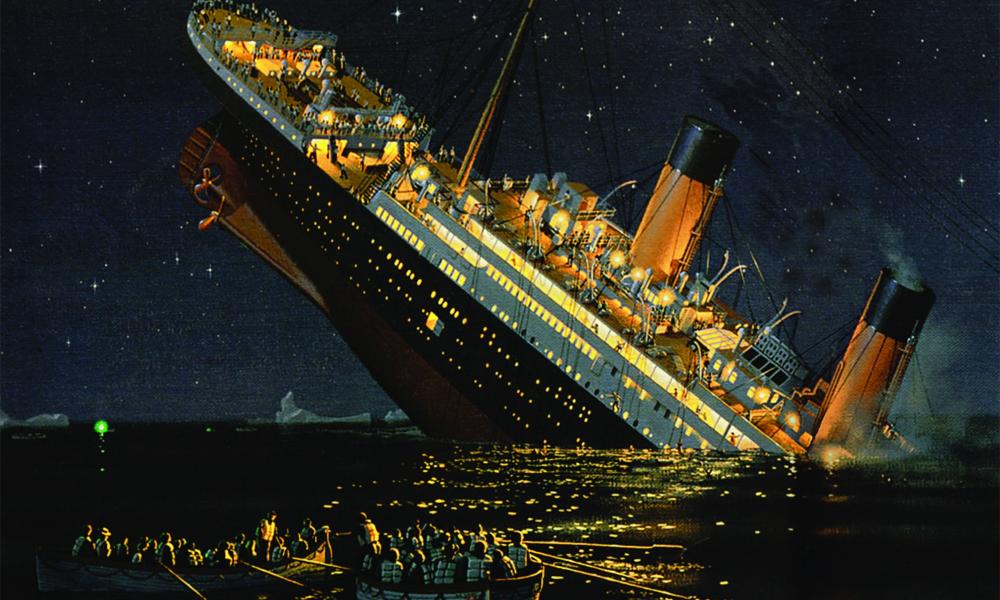Blog Post
The World Before the War
By Jonathon Van Maren
My introduction to this series on the 20th century, “The Century that Changed Everything,” can be found here. This is the second installment in the series.
In many ways, the 20th century begins in our collective memory on June 28, 1914, when Archduke Franz Ferdinand and his wife Sophie were shot to death by Gavrilo Princip of the Serbian terrorist group the Black Hand on the streets of Sarajevo. The Great War that followed was a cataclysm that seemed to cleave time in two, forever separating the age that preceded it and the century that followed, from Vimy to Versailles, from the Bolsheviks to Bastogne. As G.J. Meyer noted in A World Undone: The Story of the Great War: “The war really did change everything: not just borders, not just governments and the state of nations, but the way people have seen the world and themselves ever since. It became a kind of hole in time, leaving the postwar world permanently disconnected from everything that had come before.”
But before we turn our attention to the First World War, I want to examine the handful of years preceding that, the years 1900-1914. This period of the century is now covered in that impenetrable shadow that lies beyond memory in the inaccessible land of history, territory that grows with each passing year as those who lived through the great events of the 20th century slip away one by one as all men and women must. Even the oldest men and women have few tangible memories of this time, although a handful are yet with us: Bob Weighton, the world’s oldest man, was born on March 29, 1908, and the world’s oldest woman, as of this writing, is the 117-year-old Kane Tanaka, who was born on January 2, 1903.
For insight into what the world was like as the 20th century dawned, I called Dr. Adrian Gregory, a Cambridge-educated member of the Faculty of History at the University of Oxford, a Fellow of Pembroke College, and a scholar who has been studying the first half of the 20th century for decades. When looking at this period, he told me, it is first important to recognize that “by our standards, it was extraordinarily poor. Average standards of living are much, much lower across the world as a whole. Most people are living more or less on the edge of potential starvation. Even in a prosperous country like Britain in 1900, the levels of poverty among the industrial working class is such that one in every four children in the inner city dies in infancy.”
A snapshot of the United States at the turn of the century would reveal 13,000 automobiles, 76 million people, and a national debt of a mere billion dollars. School was not yet mandatory, and child labour was common, with children as young as eight or nine years old earning two dollars a week for working ten hour days in the factories. The average father of a household earned only $9.60 per week. Women frequently dressed in two-piece suits with several petticoats as well as a corset, camisole, and silk blouse. A glass of beer only cost five cents, and a good steak maxed out at 15 cents a pound. There were virtually no telephone lines, and a man in San Francisco could not call a family member in Boston. There were no nation-wide highways of any significant size, and horses were still everywhere. As a result, there were almost as many blacksmiths and stables in cities like Chicago as there were businesses such as pharmacies.
Journalist Jim Bishop, who was born in 1907, described America in 1900 this way:
Most people were in bed by 9:30 PM. Kerosene lamps came down from the ceiling on chains, and glass portiers tinkled in a breeze. Everyone stopped to watch a fire engine go by, pulled by three husky wild-eyed horses, with smoke pouring black out of a pumper…A man could live his life without ever traveling more than 30 miles from home. Sink faucets were made of brass and had to be polished…A sturdy two-story house ran to $1,500, and the living room was shut off by folding doors except for state occasions, like weddings, funerals, and the visit of a well-to-do relative. Any woman who understood anything about sex was ‘loose.’ In summer, workmen left for jobs in a pair of denim trousers and an undershirt. The rich wore straw boaters, striped blazers, and white flannels. In poorer neighborhoods, the grocer marked all purchases in a ‘book’ and was paid on payday…Kisses were permitted only if the young man was ‘serious.’ Modern city streets were cobbled. Suburban roads were rutted with wagon wheels. Little boys played in rompers and overalls. High school girls who enjoyed exercise wore blue bloomers…A fast steamer could reach Europe in nine days. Los Angeles had a population of 100,000.
The world before the War was, Gregory told me, “a staggeringly unequal world. The contrast between the peasantry of Russia, which is experiencing famine in the 1890s on a horrifying scale, and the courts of Nicholas II—Faberge eggs and conspicuous consumption—is quite incredible. This is one of the things underpinning the entry into the 20th century, this sense of visceral poverty and deep inequality, which is one of the things that fuels the revolutionary movements of the early 20th century.” Several of those movements, most notably the Bolsheviks, would dramatically reshape both the century and the entire geopolitical landscape. This was “still a world dominated by multi-ethnic empires”—not only the British Empire, but the Hapsburg Empire, the Tsarist Russian Empire, and the smaller empires of Germany and France. The American Empire, of course, was yet to come. These multi-ethnic empires were rife with nationalist tensions, as aspirations of self-government stirred around the world.
Interestingly, one microcosm of this was the Second Boer War (October 11, 1899 to May 31, 1902), which was raging in South Africa as the century dawned. That colonial conflict turned out to be a great meeting of men and omens, where the British Empire showed that it could be beaten as the Boers rocked them back with defeat after defeat—and only won by resorting to tactics that would resurface again and again throughout the bloody century: Concentration camps, where tens of thousands of Boer women and children perished. It was in this conflict that the young Winston Churchill, who had flitted about the Empire in search of danger and acclaim, finally achieved the recognition he sought by escaping imprisonment in Pretoria and returning to England to get elected to Parliament. During this same war, Mahatma Ghandi served the British forces on the frontlines with the stretcher-bearers of the Natal Indian Ambulance Corps, where he began to perfect the tactics of non-violence he would later use to take down British rule in India.
When I asked Dr. Gregory what the world before the War looked like, he had to think for a moment. It was, he replied, an “odd combination of the immemorial and timeless and the pockets of modernity, the urban environments of new technologies, new innovation. If you think about the period from the 1890s to the outbreak of the Fist World War, extraordinary numbers of technological innovations are going on: cinema, the gradual acceleration of the use of the internal combustion engine, the greater and greater utilization of electricity, radio coming into being, records and recorded music. There is this sense of what one cultural historian called vertigo, the experience, particularly in Europe and North America, of these waves of modernity coming through. Also, just before the First World War, Henry Ford is introducing mass production methods in Dearborn, Michigan…[there is] this sense of technological change.”
In addition to the technological change, cultural changes were also stirring. “[There is] the introduction of modernism in music, art, and literature, the world of Picasso and Stravinsky,” Gregory told me. “There is this sense of very rapid change and therefore culture shock, which in turn, creates this very definite tension, almost generational tension, the excitement of the new creating insecurity amongst the old. There is a sense of a world changing in uncontrollable ways.” Despite the general poverty, he noted, “relative to the middle of the 19th century, one of the things that’s beginning to develop is a certain amount of discretionary income for people for small luxuries, for being able to access new forms of mass culture and mass entertainment: The ability to read a Saturday newspaper, to buy a record player and purchase music, to go to the cinema. The cinema as a new cultural form is a very much a cultural form for the poor. It’s actually cheap entertainment [and it is] really taking off immediately before the First World War.”
There are also glimpses of the world after the War, as well. “It’s a world of emerging spectator sport, whether it be football, in America, baseball, the beginning of a world where people don’t just play sports, but pay to watch others play sports,” Gregory observed. “It’s a world where boxers become huge international celebrities. We’re beginning to move into an area of mass popular culture. And then you have cultural entrepreneurs, press barons emerging who can give the public what they want. This becomes quite important in terms of thinking about how, during the First World War, the media can influence populations.”
The world before the War was also a very religious world, despite the fact that the pillars of Christendom had endured the gnawing of hordes of termites over the past century and a half. As a result of Charles Darwin’s On the Origin of Species and The Descent of Man, his cousin Sir Francis Galton had launched a eugenics craze that resulted in men, women, and children of every sort being locked up in horrifying institutions colloquially known as insane asylums. In the United States, many supposedly imperfect people were forcibly sterilized (a practice that was not widespread, but yet far more common than most suppose—as late as 1927, the U.S. Supreme Court would rule in favor of eugenic sterilization.)
Darwin, meanwhile, had helped to solidify amongst the intellectual elites the view that the Bible was a hopeless collection of fairy tales. In 1835, David Friedrich Strauss had helped pioneer Scriptural criticism with his book The Life of Jesus, Critically Examined, which claimed that Christ’s miracles were impossible (which is to say that they were miracles.) Throughout the 19th century, as Ted Byfield explained, Christianity was pushed out of certain fields: “Christianity no longer played the central role it once had in scientific endeavor. When the British Association for the Advancement of Science was created in 1830, science historian John Hedley Brooks observes, 30% of its members were clergymen; in the ensuing 35 years, 41 Anglican clergymen presided over its various sections. By 1900, the association had just three clergy members.”
In fact, Byfield claims in his 12-volume history of Christianity that the decline of faith contributed to the conditions that triggered the First World War. By the time Gavrilo Princip fired his shots in Sarajevo, he writes, Europe had become a world war waiting to happen:
There had been no major, continent-wide conflict in Europe since…Waterloo…But the French Revolution and Napoleon’s blood-soaked imposition of its ostensibly benign principles had unleashed a force in Europe that in the twentieth century would dwarf the toll in lives and destruction wrought by Bonaparte himself. The force was nationalism, and like the old faith that it widely supplanted, it captured the hearts and minds of men in almost every developed nation. But as a pseudo-religion, nationalism would prove a catastrophic substitute for Christianity.
In fact, in the view of historian Carlton J.H. Hayes, nationalism had begun to replace Christianity in the world before the War. As he noted in Nationalism: A Religion, the previous two centuries had brought about an intellectual elite that, as a result of Darwin’s theories and the Enlightenment’s philosophies, had become secular. Additionally, the Industrial Revolution “created a great migration of the working classes away from their ancestral homes and religions and into the cities, where seven-day work-weeks and twelve-hour workdays created a practical break with the church.” This created a void—a void, writes Hayes, that was filled by ideologies such as nationalism and Communism. Communism, which flourished where governments failed, had more limited success, much to the frustration of Marxist leaders, who felt that the working man didn’t know what was good for him. Nationalism, on the other hand, was rife with the power of symbolism and identity, and was an enormously powerful and popular force. It could be a sacred cause—and in many cases, religion could even be co-opted and included.
But all of that said, the West could still be called Christian before the War. Christianity permeated every aspect of society, shaping the way people lived, the way they saw the world around them, and even the way they spoke. Christianity was a fundamental part of the common culture that all shared in, and this collective heritage defined the character of the West. The century that followed would bring changes that would have been unthinkable to the inhabitants of the world before the War, and it is simply true to say that those who lived before the Great War would be almost incapable of understanding their dwindling descendants in the West today. The chasm between then and now is simply too deep and too wide, and we have come too far—one writer I know has often said that he feels as if he is a thousand years old, as that is how long it usually takes for the sorts of changes we have seen occur in mere decades to unfold.
I’ve always felt that one of the reasons the story of the sinking of the RMS Titanic during the early hours of April 15, 1912 is so compelling is that it seems, in many ways, that the Victorian Era went down with her. The scenes that unfolded during the hours before the ship went down are now legendary: The band playing “Nearer My God to Thee” on the deck as passengers scrambled for the lifeboats; men refusing to board the lifeboats to make way for women and children; the elderly owner of Macy’s, Isidor Straus, refusing to take the seat he was offered on account of his age—and his wife choosing to retire to their suite to perish with him. Benjamin Guggenheim and his valet famously went to their rooms when it became clear that the ship was sinking, returning to the deck in their formal evening dress, with Guggenheim announcing: “We are dressed in our best and prepared to go down like gentlemen.” More than 1,500 people drowned. Back then, the media still reported it as a loss of “souls.”
The scenes of chivalry on the decks of the Titanic were so extraordinary that Winston Churchill noted in a letter to his wife Clementine shortly after the sinking that the stories he had heard made him proud: “Boatloads of women and children tossing on the sea safe and sound—and the rest—silence. Honour to their memory…How differently imperial Rome or Ancient Greece would have settled the problem. The swells, the potentates would have gone off with their concubines and pet slaves and soldier guards…whoever could bribe the crew would have had the preference and the rest could go to hell. But such ethics could neither build Titanics with science nor lose them with honour.” Only a Christian culture could.
On a visit to Halifax some time ago, I visited the Fairview Lawn Cemetery, where 121 victims of the Titanic disaster are buried. The gravestones were a testament to the values of a different era: “To the Sacred Memory of Everett Edward Elliot Of the Heroic Crew S.S. Titanic,” read one. “Died on Duty April 15, 1912, Aged 24 Years. Each Man Stood At His Post While All The Weaker Ones Went By, And Showed Once More To All The World How Englishmen Should Die.” And another: “Ernest Edward Samuel Freeman…Husband of Laura Mary Jane Freeman. He Remained At His Post of Duty, Seeking To Save Others, Regardless Of His Own Life And Went Down With The Ship. (Erected By Mr. J. Bruce Ismay.)” In fact, it was considered downright scandalous that Ismay, the managing director of the White Star Line, had even survived—the headline in the New York Times read: “Titanic sinks, 1,500 Drown, Ismay Survives.”
Francis Wilson, the author of The Sinking of J. Bruce Ismay, described how it looked when the Titanic went down, and the stunning scene is the perfect metaphor for the ending of an age. Despite the horror of what was happening, Francis noted, many of the survivors were overwhelmed by the “sublime beauty of the sinking…What they said again and again was that it was this almost perfect night: It was freezing cold and far below zero, the sky was this completely clear vault of stars with no moon at all, and the sea hadn’t a ripple in it. In the middle of this, this great ship with its lights ablaze is going down like a stricken animal. People in the lifeboats just gazed. They’d never seen anything like it…this mixing of beauty with terror.”
The century to come would bring much more of all that.









I hope this is part of a book, Mr Van Maren. We are so dangerously poised on the brink. We need a map to avoid shoals, and a blueprint for building society again from the rubble, with faith and integrity.
The myth of the Titanic was mere propaganda. The nabobs and pontentatrs survived, it was steerage passengers who died. So powerful the myth that you carry it on still.